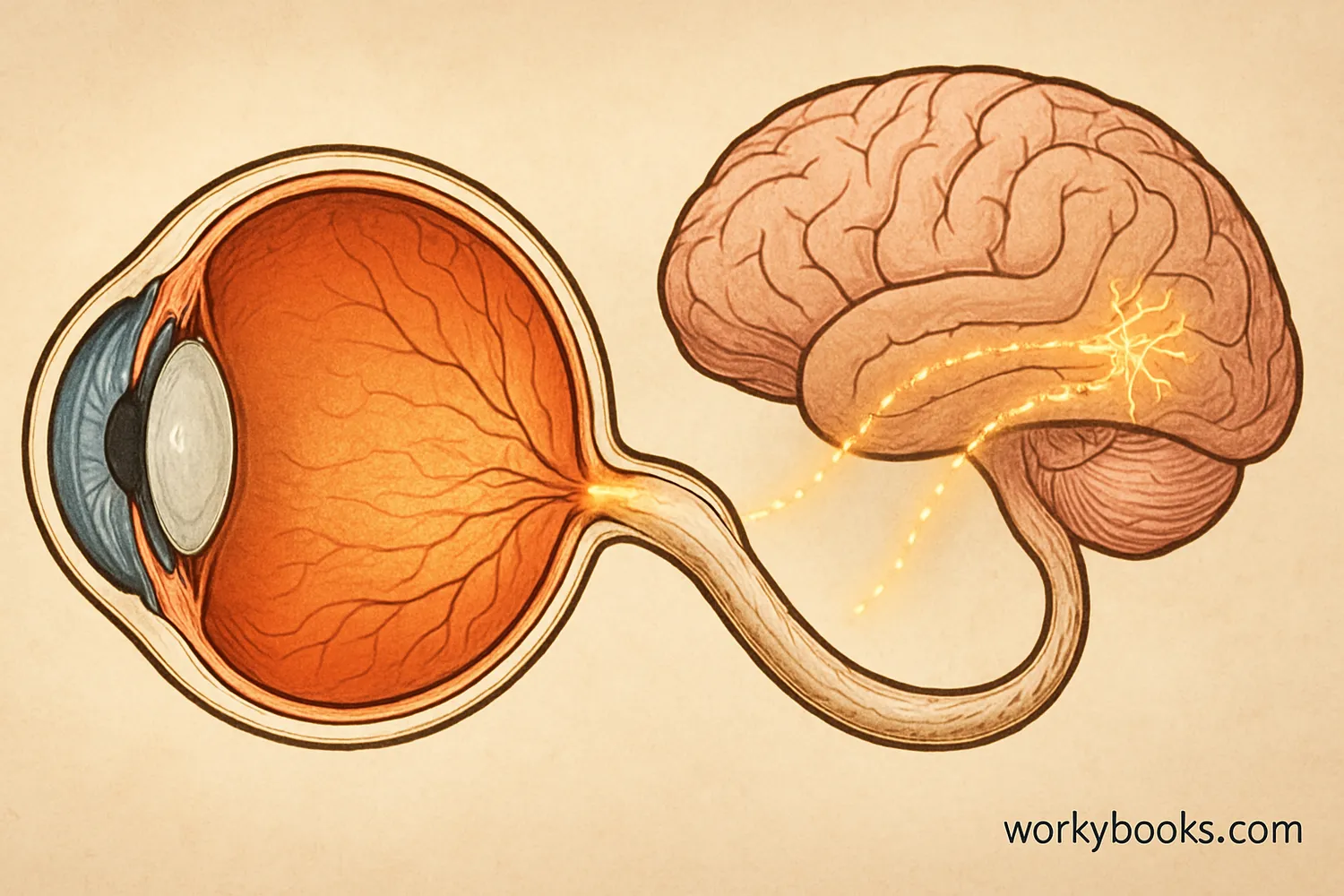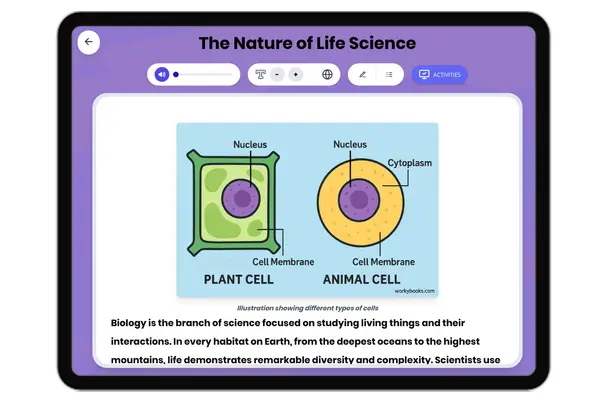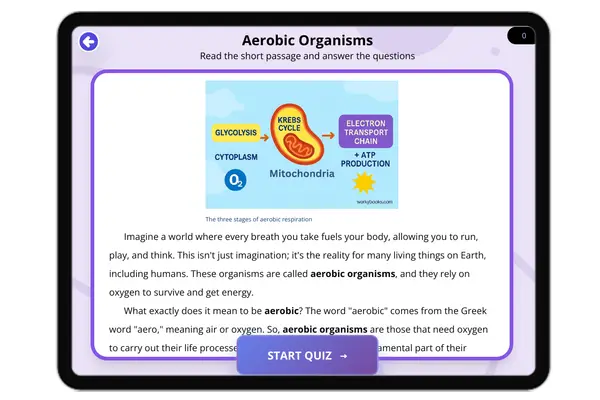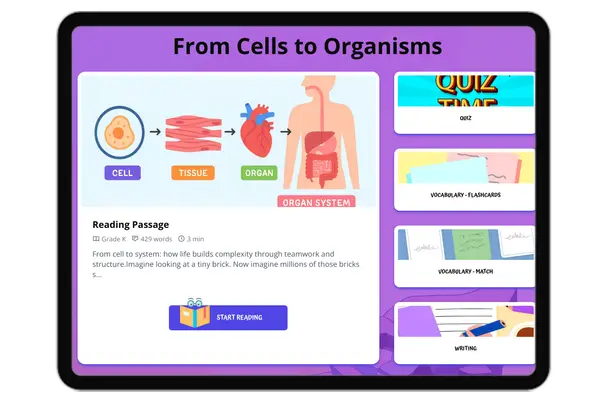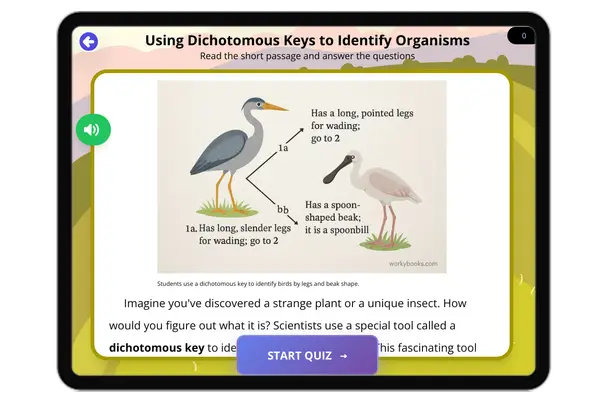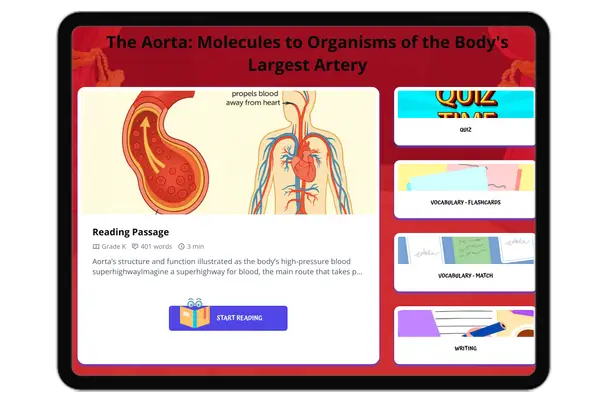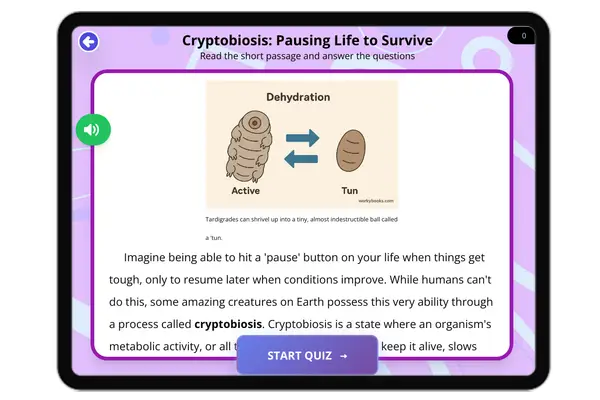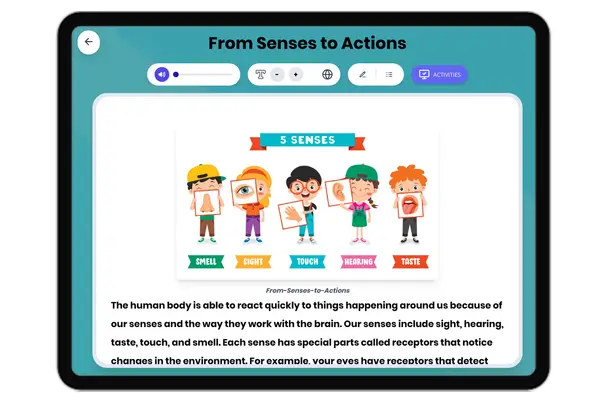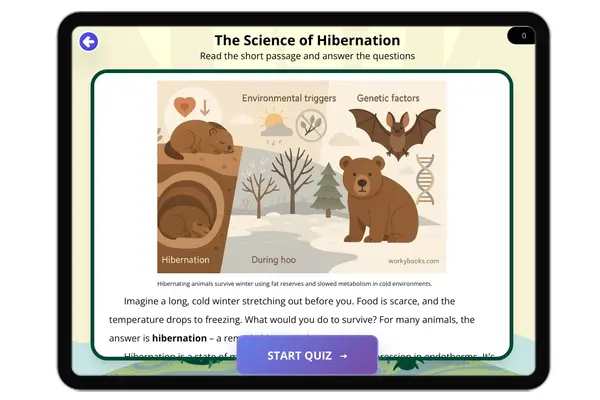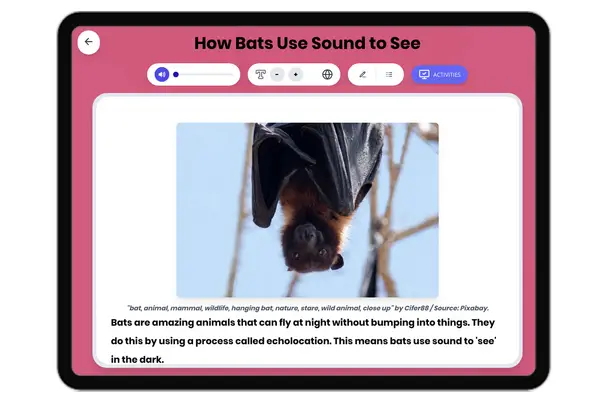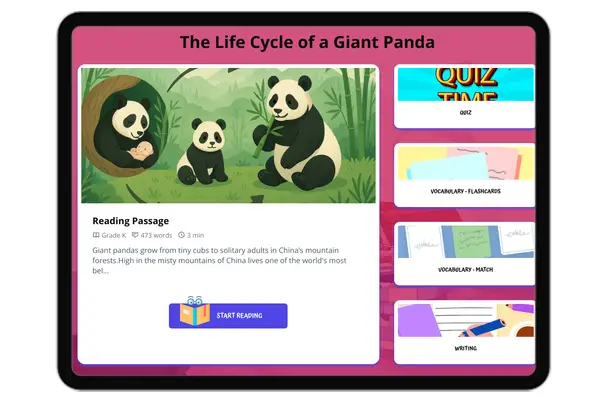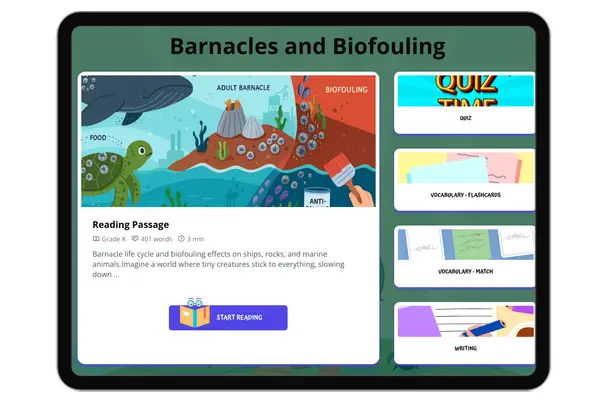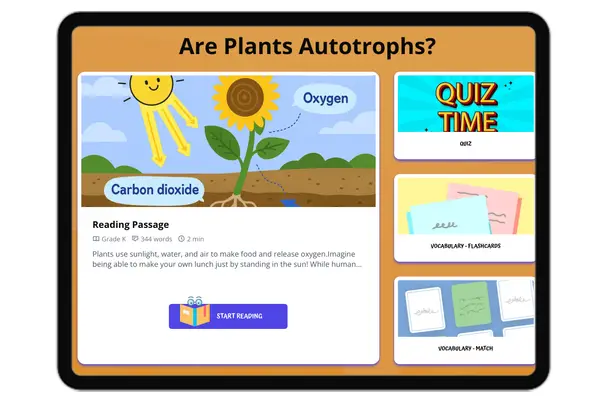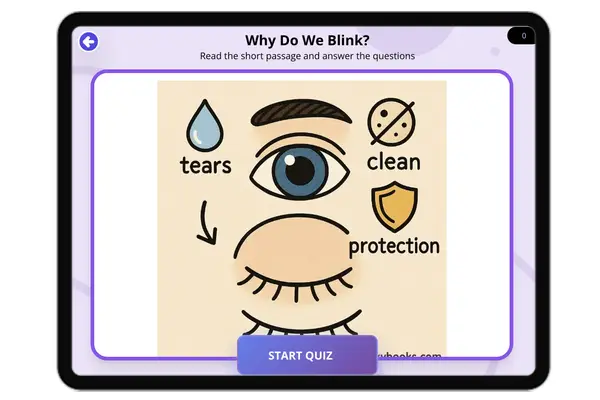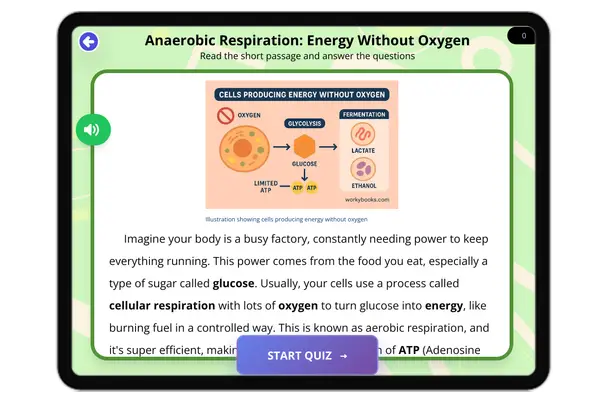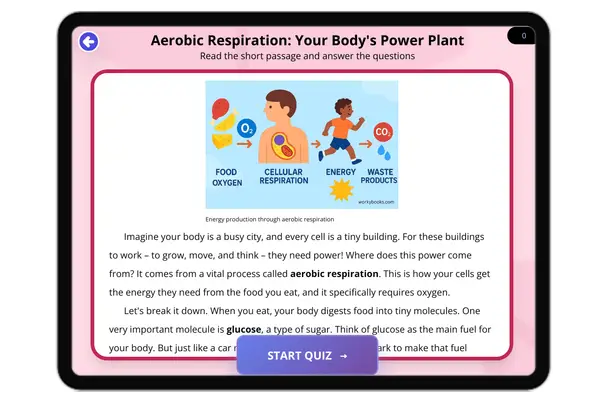What does the Optic Nerve Do — Reading Comprehension
Premium Resource
Grades
- 3
- 4
- 5
- 6
- 7
- 8
PRINT+DIGITAL RESOURCE
This learning resource is available in interactive and printable formats. The interactive worksheet can be played online and assigned to students. The Printable PDF version can be downloaded and printed for completion by hand.
About This Reader
"This reading passage explores the crucial role of the optic nerve in human vision, a core concept in life science for middle school students. It details how the optic nerve acts as a communication pathway, transmitting electrical signals from the retina to the brain's visual cortex. The text covers key anatomical structures like the optic disc and optic chiasm, explaining their functions and how they contribute to our ability to see. The passage aligns with NGSS standards related to body systems and information processing, providing students with a foundational understanding of the connection between the eye and the brain. It also includes relatable examples and a "fun fact" to enhance engagement and comprehension, making it an excellent resource for self-study or classroom use."
Perfect For:
👩🏫 Teachers
- • Reading comprehension practice
- • Auto-graded assessments
- • Literacy skill development
👨👩👧👦 Parents
- • Reading practice at home
- • Comprehension improvement
- • Educational reading time
🏠 Homeschoolers
- • Reading curriculum support
- • Independent reading practice
- • Progress monitoring
Reading Features:
📖
Reading Passage
Engaging fiction or nonfiction text
❓
Comprehension Quiz
Auto-graded questions
📊
Instant Feedback
Immediate results and scoring
📄
Printable Version
Download for offline reading
🔊
Read Aloud
Voice-over with word highlighting


